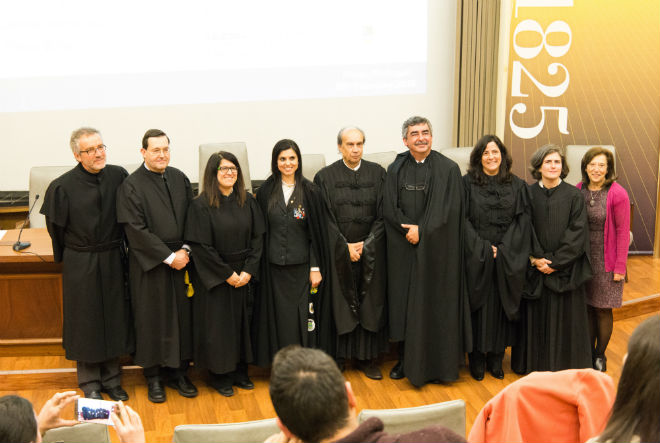THESIS DEFENSE: Incidence of hip fractures in Portugal from 2000-2010. A spatial temporal analysis
INEB PhD student Carla Oliveira defended her thesis on February 5th 2016 at FMUP, Faculdade de Medicina - Universidade do Porto. The thesis is entitled "Incidence of hip fractures in Portugal from 2000-2010. A spatial temporal analysis" and it was developed in the area of Public Health.
Supervised by Maria de Fátima Pina (Associate Professor at Faculdade de Medicina - Universidade do Porto and researcher at i3S/INEB and FIOCRUZ) and co-supervised by Denisa Maria de Melo Vasques de Mendonça (Retired Associate Professor at Instituto de Ciências Biomédicas Abel Salazar) and Trevor Bailey (Professor at the College of Engineering, Mathematics and Physical Sciences - University of Exeter, UK), Carla's work focused on hip fractures.

Hip fractures (HF) are one of the major public health problems given the high associated morbidity and mortality, besides the high economic impact of the treatment (e.g. total hip arthroplasties - THA) and recovery. The HF risk seems to be multifactorial and individual factors play an important role in this process, however, the high variability between and within regions (across and over time) suggests that there are possible environmental factors underlying these geographic differences.
The overall aim is to characterize and understand the spatial and temporal variation of HF in Portugal (2000-2010); analyze how variability in municipality socioeconomic status (SES), climatic factors (CF) and drinking water composition (DWC) might explain part of this spatial-temporal variation; and analyze how the temporal trends (1997-2010) of one of the most commonly used treatments for HF (THA) differs across sixteen countries from Europe, North and South of America and Oceania.
Hip fracture data were obtained from the National Hospital Discharge Register; municipality SES based on a set of variables from Official Institute of Statistics (INE); CF data from Official Institute of Meteorology (IPMAR); DWC data from Official Institute of Water (ERSAR) and THA data from different resources available for each country (e.g. National Hospital Discharge Register, annual reports, among others). Spatial and temporal analysis and geographical information systems (GIS) was used to address the objectives of this thesis. For spatial, temporal and spatial-temporal modeling generalized linear models (GLM), generalized additive models (GAM) and geostatistical models were used and these have been implemented in some cases in a Bayesian framework using Markov Chain Monte Carlo (MCMC) estimation and in others in a frequentist way.
A spatial and temporal variation was found in HF with a clear pattern of seasonality. Socioeconomic status might explain part (but not all) of the municipalities variability of HF and CF seems to explain part of the seasonality pattern of HF but not much of spatial and annually variability. Part of remaining variability of HF seems to be explained by DWC. One of the treatments for HF, THA, showed wide differences in temporal trends between countries.
The research presented in the thesis show that socioeconomic status and the environmental factors might explain part of the spatial and temporal variability on HF; although it seems that there is still some variability unexplained and further investigation is needed to fully understand the spatial and temporal variation in HF risk to help decision-makers to develop more effective treatment and interventions programs.


